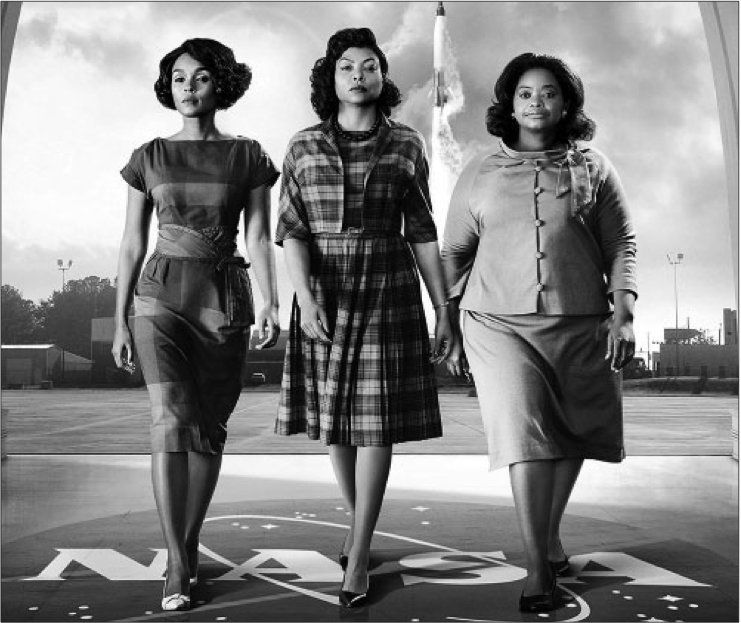The 1960s in America was a time of social revolution, heartbreak, and triumph. Set in 1961, during a time of sit-ins and peaceful protests, “Hidden Figures” tells the true story of three African-American women who work at NASA and struggle toward their dreams, despite the oppression they face inside and outside their workplace.
“Hidden Figures” does a fantastic job of showing the world what this team of strong African- American women accomplished with more intelligence, wit and grace than any of the white men that surrounded them.
As America began its race against Russia to put a man in space, NASA called on its most brilliant minds to guarantee putting a man into orbit. The story follows the three women, Katherine G. Johnson, Dorothy Vaughan, and Mary Jackson, mathematicians employed by NASA as “computers”—people who do complicated mathematical calculations by hand. As NASA struggles to compete with the Russians, these women become the brains behind the operation to put a man into space and cross all race, gender and traditional lines in order to accomplish the mission. This film truly shines a light on the hidden figures behind one of the most monumental moments in history.
The film gives viewers a good understanding of what women of color had to go through in order to just get through a day at work. From avoiding confrontation with the police, to walking over half a mile to reach the “colored restrooms” these women were constantly forced into inhumane situations. I think that everyone should see this film or read its source material, particularly younger generations, to give these women the acknowledgement they deserve.
The cast, particularly the three main roles, was superbly chosen and each actor does a wonderful job of telling an honest story while paying homage to the real women they are portraying. Taraji P. Henson expertly depicts Katherine G. Johnson, who struggles to become recognized as the brains behind the equations in a workplace filled with competitors. Octavia Spencer plays Dorothy Vaughan, who never stops working to become the supervisor of her department, and becomes a loyal, headstrong leader despite a number of setbacks. Janelle Monáe captures the witty charm of Mary Jackson, one of the first black female aeronautical engineers.
Although the story takes place exclusively in a small town in Virginia, the viewer gets a sense of what is going on with the Civil Rights Movement during this time with discussions of sit- ins and peaceful protests. This really offers the viewer a glimpse into what life was like during a time of constant oppression and intense segregation, particularly for these women who were truly working against almost every other group in the United States who wanted to oppress them.
This reality is expressed through some powerful and creative lines that the writers throw in. For example, in a powerful scene where Mary Jackson and her supervisor discuss her becoming an engineer, Karl Zielinski, (played by Olek Krupa) asks, “If you were a white male, would you wish to be an engineer?” Mary Jackson responds, “I wouldn’t have to, I’d already be one.”
Margot Lee Shetterly is the mind that first thought to tell the story of these three powerful women. Shetterly published “Hidden Figures: The American Dream and the Untold Story of the Black Women Mathematicians Who Helped Win the Space Race” in late 2016 to document the story of these women. Shetterly will be coming to Seattle University on Feb. 25 for the Search For Meaning Festival, where she will talk about “race, gender, science, the history of technology, and much else”.
Hidden Figures consistently sets a tone of tenacity and spirit as these women conquer the sexist and racist norms of their time. Hopefully this film will lay the groundwork for a number of stories to be told about the marginalized people who have been overlooked for their work as others take credit.
Tess may be reached at
towen@su-spectator.com









